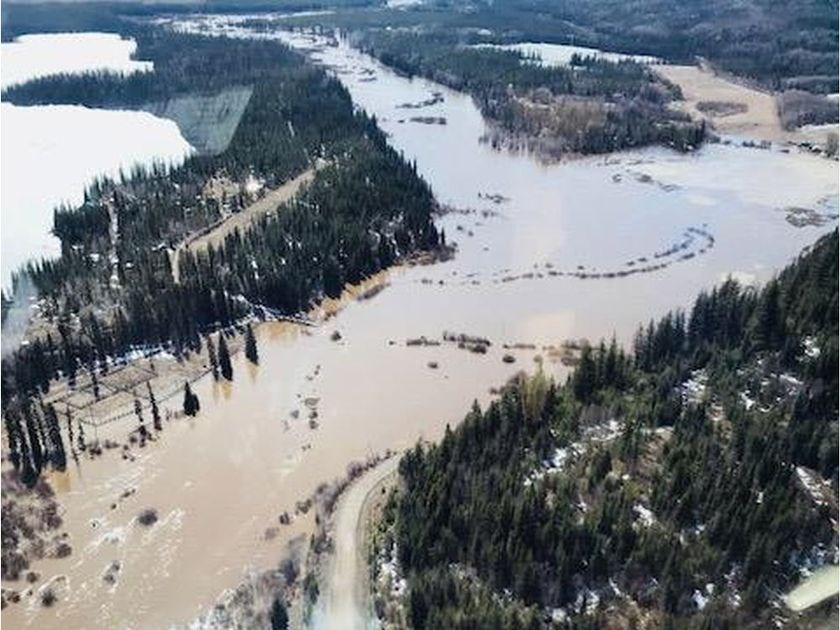VICTORIA - The risk of spring flooding is elevated in B.C. due to an above normal snowpack.
The entire province faces risk, particularly in parts of the Interior and the North.
The River Forecast Centre is predicting slightly above normal runoff in the Upper Fraser. As of April 1, snowpack stood at 132 per cent of normal in the Upper Fraser West basin, 122 per cent in the Upper Fraser East and 119 per cent in the Nechako.
Whether there will be freshet flooding is not based on snowpack alone, the RFC said. A sudden jump from cool to persistently hot weather, particularly in May could exacerbate flood risk. Dry weather and seasonable temperatures would lessen the potential threat.
British Columbians are urged to follow all directions of local authorities and take steps to prepare for the possibility of flooding.
B.C.'s most severe floods usually occur in spring and early summer when melting snow and rain combine, but they can also be caused by storm surges, ice jams or damage to structures like dikes or dams. Here are some tips to help you and your family prepare for potential flooding:
* Protect your home: prepare for possible flooding of low-lying areas by moving equipment and other assets from these areas to higher ground, where possible. Clear perimeter drains, eavestroughs and gutters. Sandbags also help and can be made available through your local government.
* Create grab-and-go bags: assemble an individual grab-and-go bag for each member of your household with the essentials you will need if you are asked to evacuate.
* Recognize the danger signs: if you live near a waterway, a change in water colour or rapid change in water level (especially a drop) could indicate a problem upstream. Call your local fire, police or public works department immediately if you suspect something out of the ordinary.
If you face a threatening flood situation, park vehicles away from streams and waterways, move electrical appliances to upper floors and make sure to anchor fuel supplies. Listen to local officials if you are asked to evacuate. In the event of flooding, here are some tips about what to avoid:
* Steer clear of river shorelines: keep away from river edges and shorelines. During periods of high flow, river banks may be unstable and more prone to sudden collapse. Stay well away and keep young children and pets away from the banks of fast-flowing streams and flooded areas or bridges.
* Do not drive through flood water: never attempt to drive or walk in flood water. Just six inches of fast-moving water can knock over an adult. Two feet of rushing water can carry away most vehicles, including SUVs and pickup trucks.
* Landslide risk: heavy rain and snowmelt may contribute to landslides and dangerous debris in creeks and waterways. Be safe and do not go down to watch the rushing water. If you notice trees beginning to lean or bend near your home, or cracks developing in the hillside, consult an engineer or contact local authorities.
More details are available in PreparedBC's Flood Preparedness Guide, which contains useful information to help British Columbians understand what to do if their home or community is at risk of flooding.
- with files from Citizen news reporter Mark Nielsen



